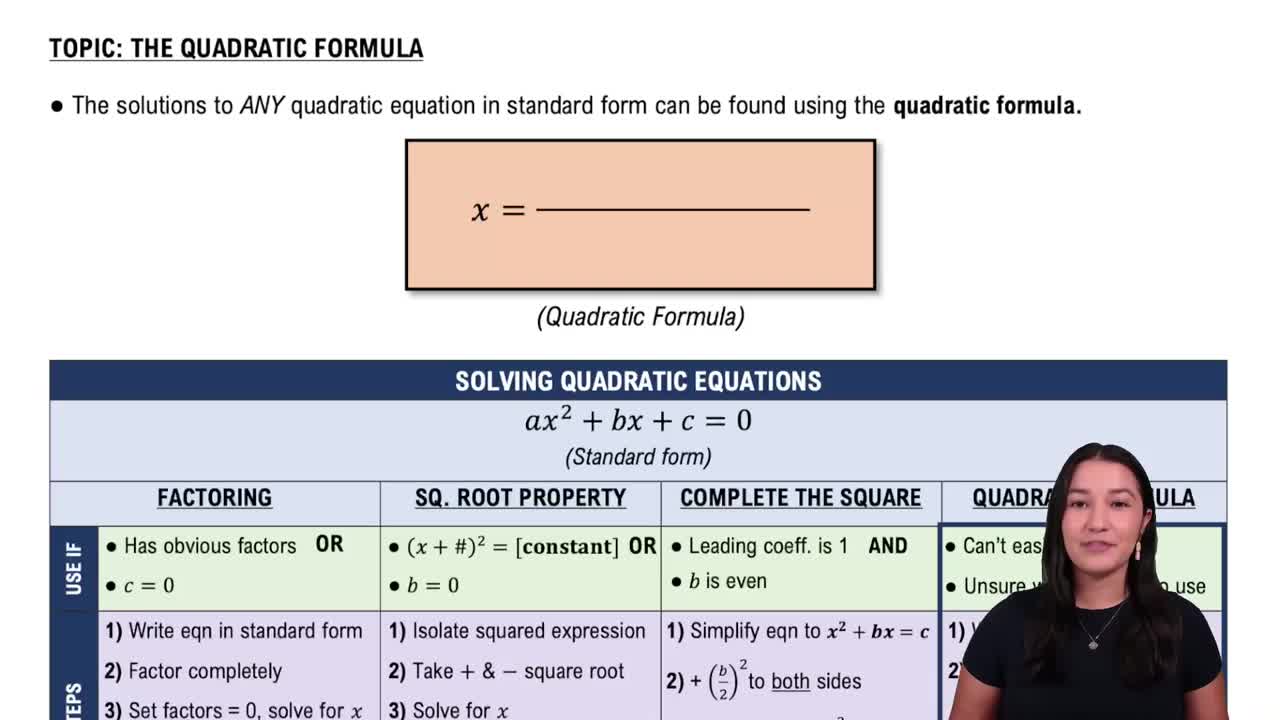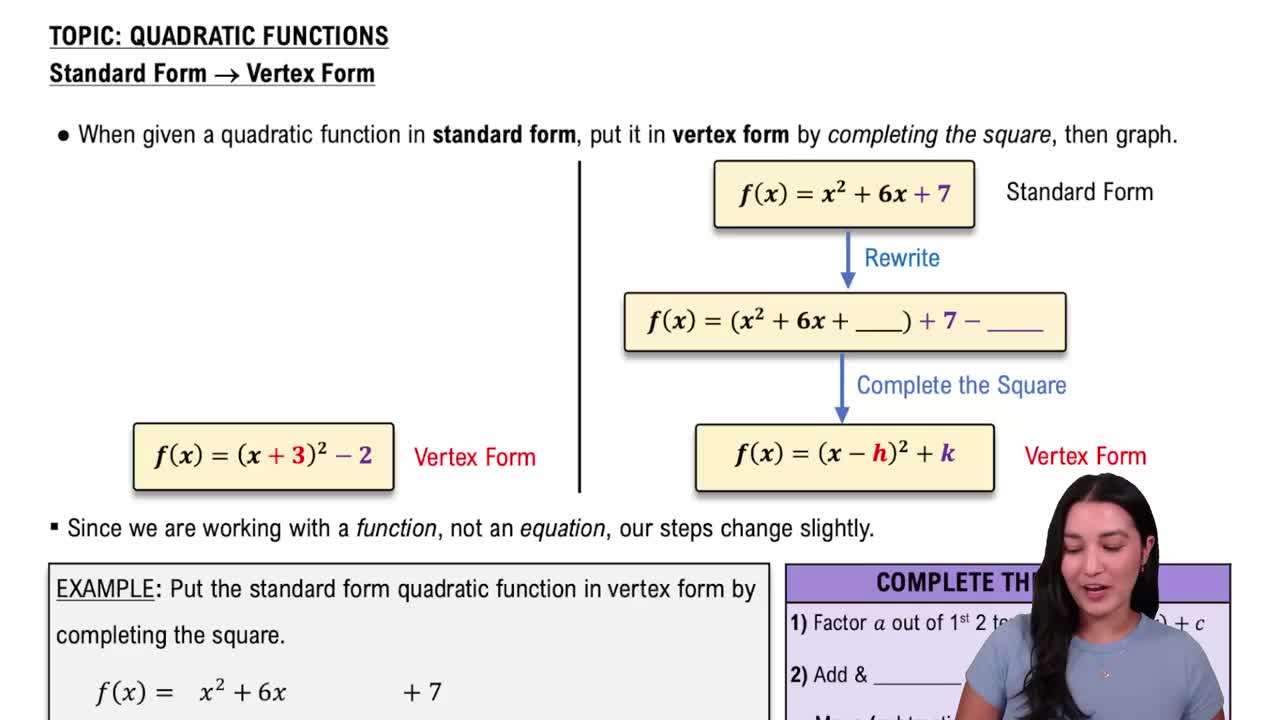Table of contents
- 0. Review of Algebra4h 16m
- 1. Equations & Inequalities3h 18m
- 2. Graphs of Equations43m
- 3. Functions2h 17m
- 4. Polynomial Functions1h 44m
- 5. Rational Functions1h 23m
- 6. Exponential & Logarithmic Functions2h 28m
- 7. Systems of Equations & Matrices4h 6m
- 8. Conic Sections2h 23m
- 9. Sequences, Series, & Induction1h 19m
- 10. Combinatorics & Probability1h 45m
4. Polynomial Functions
Quadratic Functions
Problem 82
Textbook Question
For what values of a does y = ax^2 - 8x + 4 have no x-intercepts?
 Verified step by step guidance
Verified step by step guidance1
To determine when the quadratic equation \( y = ax^2 - 8x + 4 \) has no x-intercepts, we need to analyze the discriminant of the quadratic formula.
The quadratic formula is \( x = \frac{-b \pm \sqrt{b^2 - 4ac}}{2a} \). The discriminant is the part under the square root: \( b^2 - 4ac \).
For the quadratic to have no x-intercepts, the discriminant must be less than zero: \( b^2 - 4ac < 0 \).
In our equation, \( a = a \), \( b = -8 \), and \( c = 4 \). Substitute these into the discriminant: \( (-8)^2 - 4(a)(4) < 0 \).
Simplify the inequality: \( 64 - 16a < 0 \). Solve for \( a \) to find the range of values where the quadratic has no x-intercepts.
Recommended similar problem, with video answer:
 Verified Solution
Verified SolutionThis video solution was recommended by our tutors as helpful for the problem above
Video duration:
5mPlay a video:
Was this helpful?
Key Concepts
Here are the essential concepts you must grasp in order to answer the question correctly.
Quadratic Functions
A quadratic function is a polynomial function of degree two, typically expressed in the form y = ax^2 + bx + c. The graph of a quadratic function is a parabola, which can open upwards or downwards depending on the sign of the coefficient 'a'. Understanding the general shape and properties of parabolas is essential for analyzing their intercepts.
Recommended video:

Solving Quadratic Equations Using The Quadratic Formula
Discriminant
The discriminant of a quadratic equation, given by the formula D = b^2 - 4ac, determines the nature of the roots of the equation. If D > 0, there are two distinct real roots; if D = 0, there is one real root (the vertex touches the x-axis); and if D < 0, there are no real roots, indicating that the parabola does not intersect the x-axis.
Recommended video:

The Discriminant
X-Intercepts
X-intercepts are the points where a graph crosses the x-axis, which occur when y = 0. For a quadratic function, finding the x-intercepts involves solving the equation ax^2 + bx + c = 0. The absence of x-intercepts indicates that the quadratic function remains entirely above or below the x-axis, which is directly related to the sign of the discriminant.
Recommended video:
Guided course

Graphing Intercepts

 7:42m
7:42mWatch next
Master Properties of Parabolas with a bite sized video explanation from Callie
Start learningRelated Videos
Related Practice













